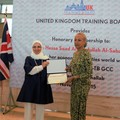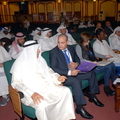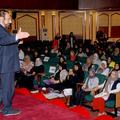
This book is the third of seven books which introduces the basic principles of accounting. This book focuses on investments intended to be held for greater than one year. It introduces accounting for investments (available for sale, trading, and held to maturity), as well as, special accounting for certain long-term investments. Readers will learn the accounting for property, plant, and equipment, and depreciation methodology and terminology. Accounting for the disposal of property, plant, and equipment, asset exchanges, impairments, natural resource accounting and depletion concepts are also presented in this book.
Content :-
- Part 1. Long-Term Investments
- Intent-Based Accounting
- The Fair Value Measurement Option
- Available for Sale Securities
- Other Comprehensive Income
- An Illustration
- Alternative: A Valuation Adjustments Account
- Dividends and Interest
- The Balance Sheet Appearance
- Held to Maturity Securities
- The Issue Price
- Recording the Initial Investments
- Illustration of Bonds Purchased at Par
- Illustration of Bonds Purchased at a Premium
- Illustration of Bonds Purchased at a Discount
- The Equity Method of Accounting
- Investments Requiring Consolidation
- Economic Entity Concept and Control
- Accounting Issues
- Goodwill
- The Consolidated Balance Sheet
- The Consolidated Income Statement
- Part 2. Property, Plant and Equipment
- What Costs are Included in Property, Plant and Equipment
- Cost to Assign to Items of Property, Plant and Equipment
- Interest Cost
- Training Costs
- A Distinction Between Land and Land Improvements
- Lump-Sum Acquisitions
- Professional Judgment
- Materiality Considerations
- Equipment Leases
- Service Life and Cost Allocation
- Depreciation Methodology
- Many Methods
- Some Important Terminology
- The Straight-Line Method
- Fractional Period Depreciation
- Spreadsheet Software
- The Units-of-Output Method
- The Double-Declining Balance Method
- Spreadsheet Software
- Fractional Period Depreciation
- Alternatives to DDB
- The Sum-of-the-Years’-Digits Method
- Spreadsheet Software
- Fractional Period Depreciation
- Changes in Estimates
- Tax Laws
- Advanced PP&E Issues/ Natural Resources/Intangibles
- PP&E Costs Subsequent to Asset Acquisition
- Restoration and Improvement
- Disposal of PP&E
- Accounting for Asset Exchanges
- Commercial Substance
- Recording the Initial Investments
- Boot
- Exchanges Lacking Commercial Substance
- Assets Impairment
- Taking a “Big Bath”
- Natural Resources
- Depletion Calculations
- Equipment Used to Extract Natural Resources
- Intangibles
- An Amortization Example
- An Impairment Example
- Some Specific Intangibles
-
Larry M. Walther, Ph.D., CPA, CMA, is the Ernst & Young Professor and Head of the School of Accountancy at Utah State University. Dr. Walther has authored numerous accounting textbooks and articles, and has served as director and/or consultant to a number to a number of public and nonpublic companies. Dr. Walther obtained his Ph.D. in accounting from Oklahoma State University and has public accounting experience with Ernst & Young. He currently serves as the accounting accreditation committee of the AACSB and is past president for the federation of schools of accountancy.
Dr. Chris Skousen obtained his Ph.D. at Oklahoma State University. He earned MBA and BA degrees from Utah State University. Dr. Skousen gained public accounting auditing experience with KPMG in their Portland, Oregon office, and as an intern in their in Düsseldorf, Germany office, and at Squire & Co. Dr. Skousen has taught accounting at Utah State University, The University of Texas at Arlington, Oklahoma State University, and Brigham Young University-Idaho. He has published in Accounting Horizons, Behavior Research in Accounting, Accounting and the Public Interest, and other journals.














